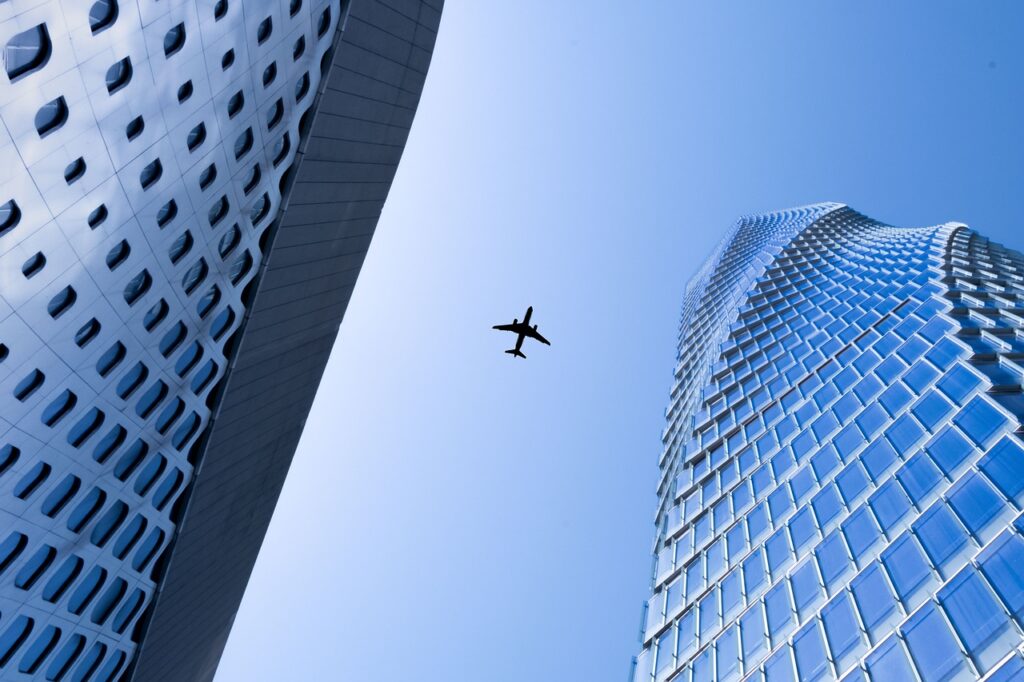Why Do Airplanes Fly So High?
Flying thousands of feet above the earth seems magical, but have you ever wondered why airplanes soar at such high altitudes? From fuel efficiency to safety, there are several compelling reasons. In this post, we’ll explore why airplanes fly so high, what happens if a plane flies too high, and why they don’t simply fly lower.

Fuel Efficiency: The Power of Thin Air
At cruising altitudes of 30,000 to 40,000 feet, airplanes enjoy thinner air, which reduces drag on the aircraft. This reduced drag allows planes to fly faster while burning less fuel. Jet engines are designed to perform optimally in this thin air, making high-altitude flying more economical.
In simpler terms, flying high means fewer stops for fuel, saving both money and time for airlines—and a smoother journey for you.
Weather and Smooth Rides
Have you ever noticed how flights often remain unaffected by storms or bad weather you see on the ground? This is because most weather systems occur in the troposphere, the atmospheric layer below 30,000 feet. By cruising above these weather systems, airplanes can avoid turbulence caused by storms, ensuring a smoother and more comfortable flight for passengers.
Turbulence: Minimizing the Bumps
Turbulence, while normal, can be unsettling for many passengers. By flying in the stratosphere—an atmospheric layer with relatively stable air—planes can minimize turbulence. The stability of this layer is one of the reasons pilots aim to cruise at such high altitudes.
Fun fact: Turbulence is generally caused by air currents, mountains, or weather systems, all of which are less prevalent at higher altitudes.
Safety in the Skies
Safety is another major reason airplanes fly so high. At higher altitudes, pilots have more time to respond to emergencies. Whether it’s an engine issue or sudden changes in weather conditions, cruising at 35,000 feet gives pilots crucial minutes to make calculated decisions.
Additionally, the high-altitude airspace is less crowded, making mid-air collisions extremely unlikely.
Tailwinds and Time Savings
Tailwinds—strong winds that blow in the same direction as the airplane—are stronger at higher altitudes. Pilots often use these winds to their advantage, especially on long-haul flights, to save fuel and reduce travel time.
For example, eastbound flights across the Atlantic often take less time than westbound flights, thanks to the jet stream tailwinds at cruising altitude.
Avoiding Bird Strikes
The skies closer to the ground are teeming with birds, insects, and even drones, posing a risk of collision. Bird strikes, while rare, can be dangerous to airplanes. By flying at altitudes above 30,000 feet, airplanes avoid these potential hazards.
Interestingly, the region around 35,000 feet is also almost free of microbes and other atmospheric contaminants, adding to the safety and efficiency of high-altitude flight.
What Happens If a Plane Flies Too High?
While cruising at high altitudes is beneficial, there’s a limit to how high planes can safely fly. This limit is often referred to as the “service ceiling” of an aircraft.
If a plane exceeds this limit:
- Loss of engine efficiency: Jet engines struggle to perform in extremely thin air.
- Cabin pressurization issues: The air becomes too thin to maintain safe cabin pressure, potentially leading to hypoxia (low oxygen levels) for passengers and crew.
- Structural limitations: Aircraft are designed to handle specific pressure and temperature conditions. Exceeding these can cause structural strain.
In short, while high is good, too high can be dangerous.
Why Can’t Planes Fly Lower?
If flying high is so beneficial, why don’t planes cruise closer to the ground? Several factors come into play:
- Increased fuel consumption: Lower altitudes have denser air, which increases drag and forces engines to work harder, consuming more fuel.
- More turbulence: The troposphere, where most weather systems occur, is riddled with turbulence.
- Air traffic congestion: Airspace closer to the ground is more crowded with smaller aircraft, making navigation more challenging for commercial jets.
Thus, staying high is not just a preference but a necessity for efficiency and safety.
Conclusion: The Art of Flying High
So, why do airplanes fly so high? It’s all about a balance of fuel efficiency, safety, and comfort. By cruising at altitudes of 30,000 feet or more, airplanes can save fuel, avoid bad weather, reduce turbulence, and ensure passenger safety—all while delivering a smoother ride.
The next time you’re marveling at the view from your window seat, you’ll know exactly why airplanes aim for the skies.
FAQs
Why do we fly planes so high?
Airplanes fly high to reduce drag, save fuel, and avoid bad weather. High altitudes also offer a smoother and safer flight.
What happens if a plane flies too high?
Flying too high can lead to engine inefficiency, cabin pressurization problems, and structural strain on the aircraft.
Why can’t planes fly lower?
Flying lower increases fuel consumption exposes planes to more turbulence, and creates congestion in crowded airspace.
Why do planes fly above 30,000 feet?
Planes fly above 30,000 feet to take advantage of thinner air, which reduces drag, improves fuel efficiency, and provides a smoother ride.